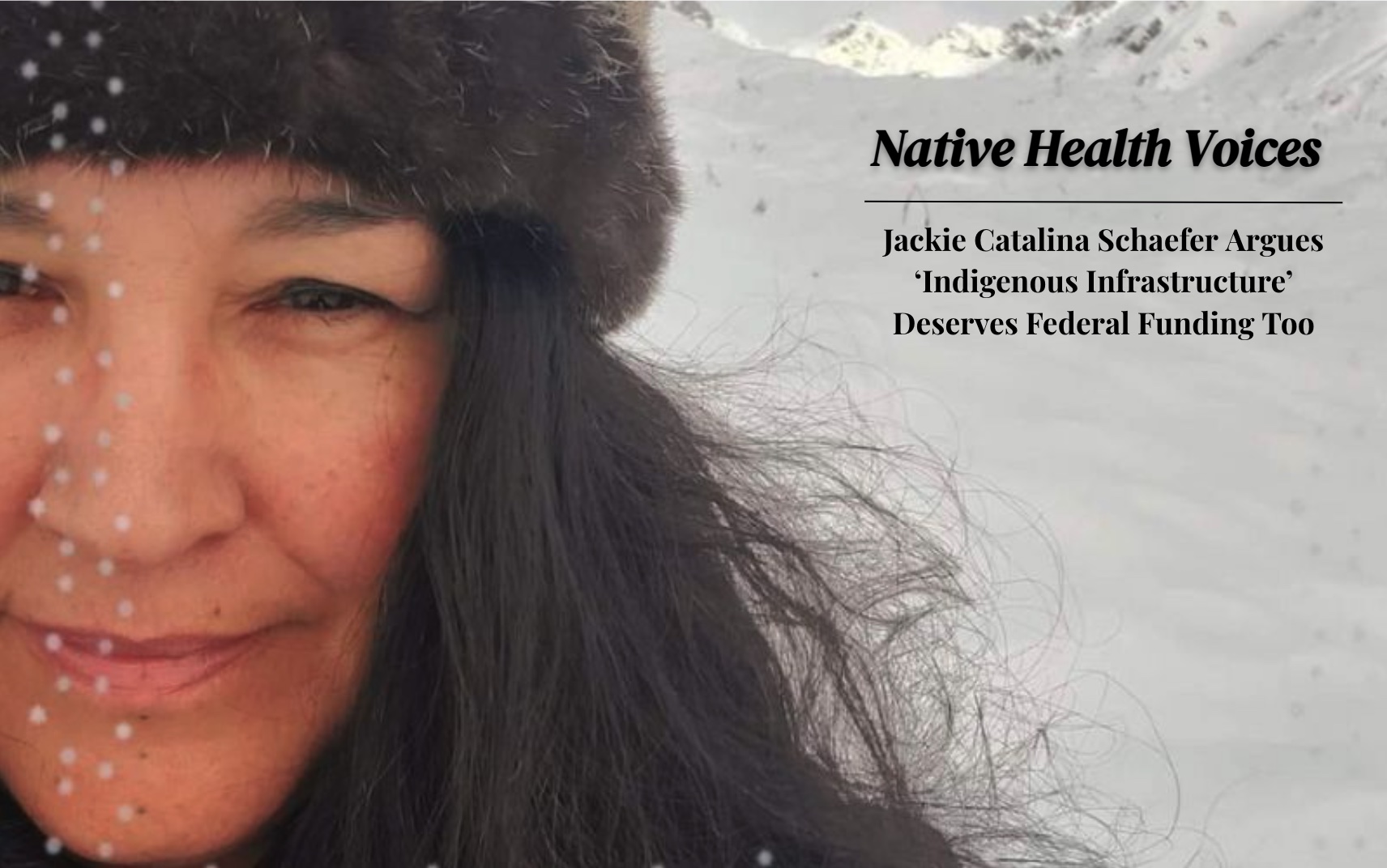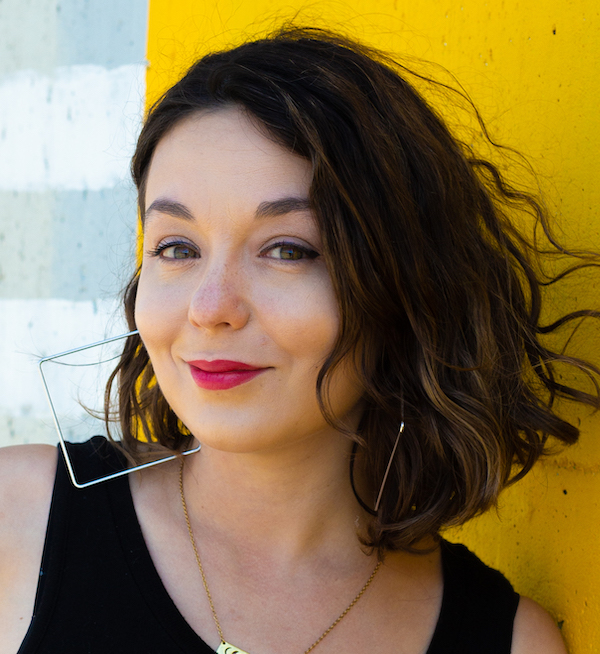
- Details
- By Elyse Wild
ANCHORAGE — Federal agencies spend billions on roads and energy systems in Alaska, but nothing on fish camps and traditional trails that Jackie Qatalina Schaeffer calls “Indigenous infrastructure” — the subsistence systems that keep Alaska Native communities fed and healthy. As climate change threatens both types of infrastructure, she argues one is being ignored.
Schaefer (Iñupiaq), director of climate initiatives at the Alaska Native Tribal Health Consortium, works across Alaska’s 229 tribes where communities depend on the environment for up to 80% of their food. When salmon disappear from rivers or the weather becomes too unpredictable for safe hunting, the health impacts are immediate. “If our environment is unhealthy, we’re unhealthy,” she said.
Native News Online spoke with Schaefer during a recent trip to Anchorage about how Indigenous knowledge can guide climate solutions, why federal funding priorities need to change, and what gives her hope despite mounting environmental threats. This interview has been edited for clarity and brevity.
What does environmental health mean for Alaska Native communities?
Environmental health for Alaska Native communities is interwoven into the fabric of who we are as Indigenous people. It reflects the health of our people because we rely on the environment for up to 80% of our sustenance. If our environment is unhealthy, we're unhealthy.
An elder once told me that the reason we have thrived in the Arctic for thousands of years is because we mimic nature—we are part of nature. When nature shifts, we shift. We don't stop, analyze, find out what's wrong, and then pivot. We simply shift with the wind.
There's a word, "sila," that is the universal word for everything—weather, the universe, all-encompassing. We are part of that. We are a thread in sila.
When it comes to climate initiatives, we built our foundation on this understanding. Our solutions, responses and strategic planning integrate this philosophy.
Environmental health is interwoven into the fabric of who we are as Indigenous people—it's not separate. It's everything we do.
What are the biggest environmental health threats facing Alaska Native communities?
The challenges are twofold. We have hard infrastructure, or Western infrastructure systems like energy, roads, runways, and housing. But we also have what I call indigenous infrastructure that's just as important, if not more important: In my region, that looks like fish camps and historical trails that used to be dog sled trails. We're pushing to have them recognized as infrastructure.
There is damage being done to Western infrastructure or those hard systems— energy, water and healthcare. Then we have impacts on our traditional foods, like the loss of salmon along the Yukon River, which totally changes how people live. When you lose salmon, people live in a world without salmon; that is a loss of entire lifeways, cultures, and traditions that have been there for thousands of years.
Why don’t Indigenous infrastructure systems get the same funding priority?
During the pandemic, communities pulled together and shared with the whole community — they adapted back to that traditional way of living as a resilience factor.
People didn't just hunt for their families; they hunted for the whole community.
Those (systems) should be more urgent than the (Western) hard infrastructure, but we live in a society that focuses on hard infrastructure. We don't get funding for this other piece. As American citizens, we have the right to these things.
How is climate change affecting food security in your communities?
Most rural communities have between 50% and 80% food security that is accessed via subsistence practices from the land, air, and water. Environmental impacts directly impact health due to this factor. The impacts have disrupted some seasonal activities, and unpredictable weather conditions create safety issues when accessing foods.
Traditional foods are nutrient-rich in comparison to Western foods, and the fact that people have to physically work to access, hunt, gather, preserve, and share their foods creates layers of positive health outcomes.
How does Alaska’s complex governance structure complicate climate response?
We look at the highest-risk communities being impacted by permafrost melt and sea and river erosion, where infrastructure is being critically damaged. The governance structure in rural Alaska is unique and very different from that of anywhere else in the US. You have to first understand those layers of governance, which could become barriers or cause more conflict in the community.
In most communities, you have a village corporation, tribal government, municipal city government, then you might have a nonprofit for healthcare, and the school. You have all these individualized, Western-imposed governance structures that now have to come together and make a decision. But in the structure, they're also competing against each other for the same funding, creating internal conflict not only in community but within individuals. I'm a tribal member, village corporation shareholder, regional corporation shareholder, and municipal member. How do I make that decision when I'm told to choose?
How does your team navigate these competing interests?
Our goal when we work with communities is to recognize there's always going to be some level of conflict and meet them where they're at. If they can't come to a consensus, we will work around that. We're learning so much because of all the disruptions and connecting factors. There are so many threads—it's like we're on the backside of a tapestry, and it's very tangled and messy, but we know there's beauty there because we see that in community.
How do you center Indigenous knowledge in climate planning?
Our team is able to go into a community, meet them where they're at, and then plan adaptation and environmental health through their lens.
If we know a community only relies 40% on subsistence food, what is the other 60% for food security? Because people need food, water, and shelter.
We try to look through that lens of protective factors for human beings. And make sure we're stepping into their world and their Indigenous knowledge systems—they're different in every community. We have 11 very distinctly different cultures across our state.
Our approach is grassroots because it's far more sustainable than a Western system approach to planning. If we're not aware of their site-specific culture, ways of living, and traditional practices, then we can't plan adaptation in a sustainable fashion. It's our job to learn, then empower and allow them to create things important to them, prioritize projects important to them, and provide tools and resources.
How do you balance that — the Indigenous knowledge — with Western approaches?
We live in a society where you're only a couple of generations from the disruption of colonization. What you see on TV, you think that's what you should have. You don't have a lens of needs and wants—they're almost together. It's really important for me and my team to recognize and value the existing things that have sustained through layers of colonization. If you have one traditional healer in your community, how can you make sure that in one generation, you have five? Start building from that center on that Indigenous knowledge system versus only Western, because in some cases, you can integrate; in other cases, you can't. They're completely opposite.
Our traditional way of thinking is community, family, and self. Western societal thinking is about self, family, and community. So it's completely opposite. You have to think: what's more important, community or self?
How does intergenerational trauma influence how communities experience and respond to climate threats?
We recognize we're dealing with layers of trauma in the community: colonization, displacement, boarding schools, loss of language, loss of cultural practices, plus climate events not seen in our generation. We call it layers of trauma, and it's different in each community. Some communities have healed certain layers—there's a large boarding school effort to heal trauma from boarding schools.
It's intergenerational in the sense that everybody experiences it differently. I have an uncle who went to school in Pennsylvania and was a star football player, and his brother went to a religious institute that almost killed him. Every family was plucked and thrown in different directions. So it's not just intergenerational; it's interpersonal.
These layers of trauma or disruptions in community — the environmental health component just exacerbates everything.
Where do communities start healing with so many layers of trauma?
The environmental threats are so rapid and destructive, and it's hard to say how we heal trauma if we have so many layers of it. Where do we start?
It's been shown that if you bring back language, it drops the suicide rate to (effectively) zero. It totally changes everything because you're framing new pathways in your brain, so addiction simply falls away because you're so focused on this new pathway of learning. Language is a health indicator.
What policy changes do you want to see from federal and state agencies?
We published an "Unmet Needs Report" last January that calls for a whole-of-government implementation framework. Our recommendation was that Congress create a framework for tribal organizations and federal and state agencies to systematically support Alaska communities in addressing environmental threats.
This would be a coordinated effort where tribal government, state government, and federal government all work together with access to technical expertise to help respond to situations. Our hope is to implement a pilot project in Alaska that could be replicated nationwide.
What projects give you the most satisfaction?
I was able to work with a community on installing portable alternative sanitation systems, which are in-home water systems in unserved communities. Those systems give people access to clean water. We also have the Local Environmental Observers Network, which is an international platform created by ANTHC for people to provide a video, a photo, or a story of any unusual event or animal they see. Through that platform, we connect them to scientists and researchers who could help create a narrative of what is happening. That all came from a picture my sister sent of a sudden lake draining near Kotzebue, Alaska. That is people's drinking water — the disruption is real.
What keeps you hopeful in this work?
I'm a hopeful person. Indigenous populations are hopeful thinkers, not fear-based thinkers. Community leaders give me hope when they speak up and take action. They constantly remind us culturally that we've been here for more than 600 generations. The hope is in the people, the culture, and the values of our beautiful Alaskan cultures.
I'm constantly reminded that we’re not in it alone—we have thousands of ancestors behind us. This is something we've been doing forever, just not in this societal structure.
More Stories Like This
Chumash Tribe’s Project Pink Raises $10,083 for Goleta Valley Cottage Hospital Breast Imaging CenterMy Favorite Stories of 2025
The blueprint for Indigenous Food Sovereignty is Served at Owamni
Seven Deaths in Indian Country Jails as Inmate Population Rises and Staffing Drops
Sen. Luján Convenes Experts to Develop Roadmap for Native Maternal Health Solutions

